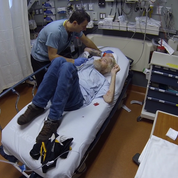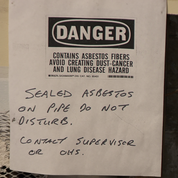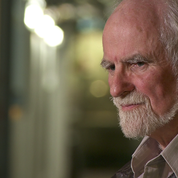In April, St. Paul’s Hospital announced it was going ahead with its plan to build a new state of the art hospital that will determine the course for the delivery of future health care. The site, which will be three kilometres away from the Burrard Street site, was unveiled and will be beside the Vancouver train station.

Shortly after the announcement, there was an outcry from both west end residents and Spencer Chandra Herbert, the NDP MLA for Vancouver-West End. There were concerns over losing a world-class facility in their neighbourhood.
Global News is launching a new series on why B.C. needs a new hospital that will transform health care in this province. First in the series is an inside look at why a new St. Paul’s “campus of care” is desperately needed.
Problems with St. Paul’s
On a typical day in St. Paul’s emergency department, which is one of the busiest in the country, hundreds of patients are admitted — with some coming through several times a month.
Dr. Dan Kalla heads the emergency department at the hospital and dealing with recurrent patients is only one of the problems he says an old St. Paul’s can’t solve.
“We’re one of the most efficient emergency departments in the country and we’re very proud of that,” Kalla says.
“But our physical plan is up to a 100 years old and our space is jury rigged together. There’s no natural flow to it… No one in the 21st century would design an emergency like what we have now.”
There is no predictability in the emergency department Kalla says, but even on quiet days, the old infrastructure throughout the hospital can be a challenge.
“You can have mass casualties and all kinds of unexpected events. You need to be able to adapt and adapt very quickly to certain crisis. So if you’re not functional, you’re paralyzed. We’ve seen it before where we have the human resource capacity, there’s nurses and physicians to take care of more patients but there’s no space to do it in. And that is quite disheartening and demoralizing and to be quite honest, quite dangerous for patients.”
St. Paul’s Background
St. Paul’s was built on the Burrard site in 1894 as a 25-bed hospital, and in the last 120 years, it’s been expanded, updated, renovated, and has never shut its doors. The downtown Vancouver hospital has become a centre of excellence in cardiac services, HIV/AIDS, mental health and addictions and kidney care, to name a few.
But in 2015, the 2.6 hectare site is on life support. The hospital’s sewer pipes are at capacity, 440 patients are crammed into four-patient rooms and the Comox Street building that was once part of the hospital has been decommissioned. That structure, which was constructed in 1930 as a nurses’ residence, now sits empty. The old residence is condemned, full of asbestos, crumbling brick, and leaks. A 2011 report on the state of St. Paul’s listed it in deplorable condition, and at risk for cataclysmic failure.
Neil MacConnell is in charge of finding a solution for the deteriorating St. Paul’s. Some critics have asked why not renovate the hospital, instead of moving it?
“You can’t renovate into a modern world-class facility, there are just too many obstacles here,” MacConnell says.
“For example, this 1912 building has 10 per cent seismic capability. All the old buildings have got very low seismic capability even the new buildings are about 55 per cent of the current code requirements.”
WATCH: David Byres from Providence Health Care speaks with Global News about the new site and why B.C. needs a new hospital
MacConnell says they have looked carefully at the option of making the site new again but based on their findings, it’s not possible.
“The work that was done by ourselves and consultants shows us we can’t get it there,” he says.
“For example we cannot get more than about 50 per cent single rooms on this site and modern healthcare is at least 80 percent single rooms.”
There is one solution — a new site. It is three kilometres away from the current St. Paul’s and the land is three-times the size. Hospital staff say it’s long overdue and the prospect of a brand new facility is exciting.
“I’ve been at St. Paul’s now for 16, 17 years and I’ve seen some of the same frustrations repeated and I share them with the patients. We often feel helpless as the doctors on the other side and the idea that there may be a new and better way to treat patients is very exciting for a veteran emerg doc like myself,” says Kalla.
Tomorrow Global News will look at how much the new site will cost, who will pay for it, and what happens to the old St. Paul’s.
PHOTO GALLERY:



























Comments